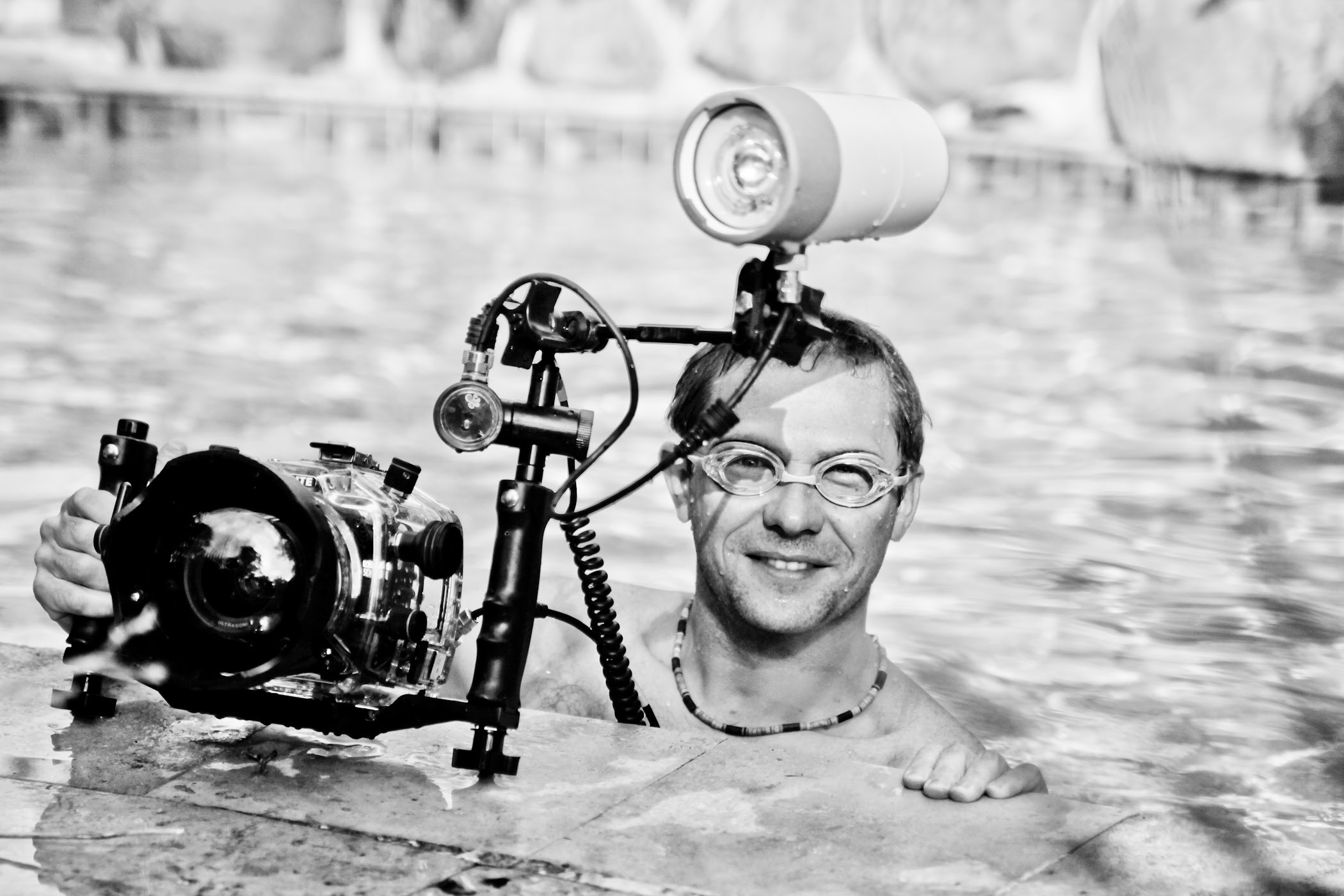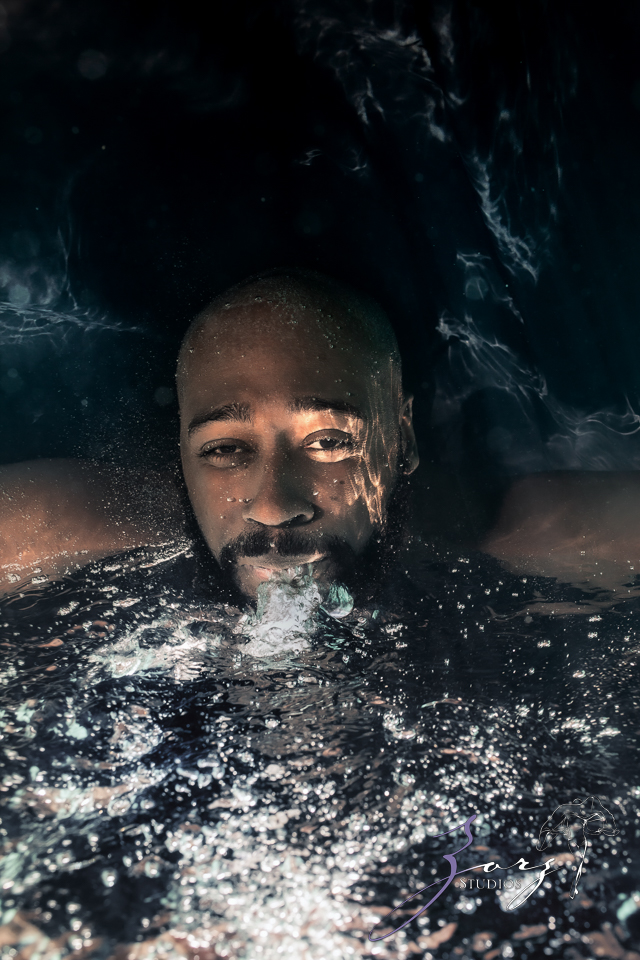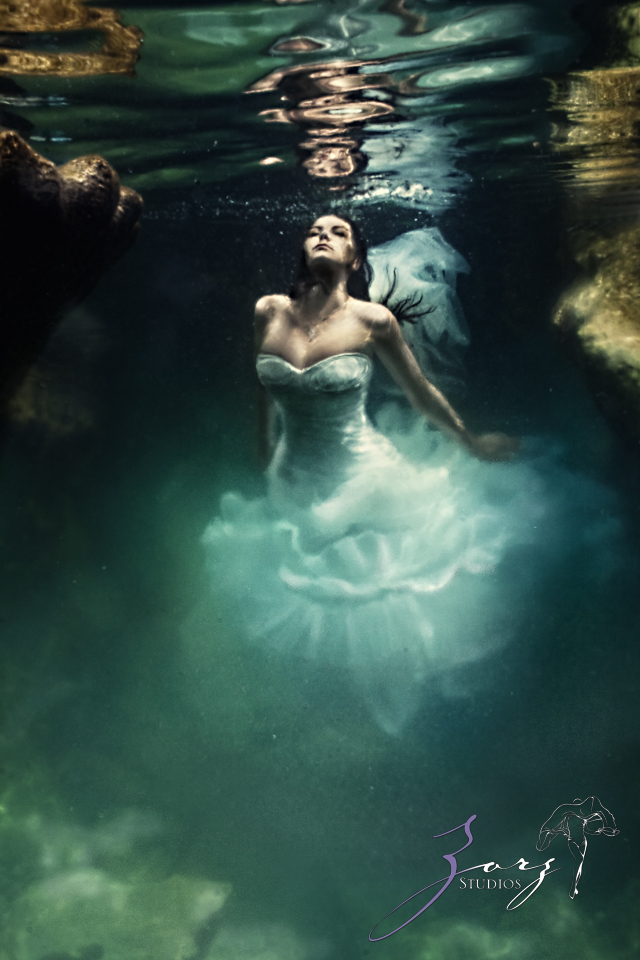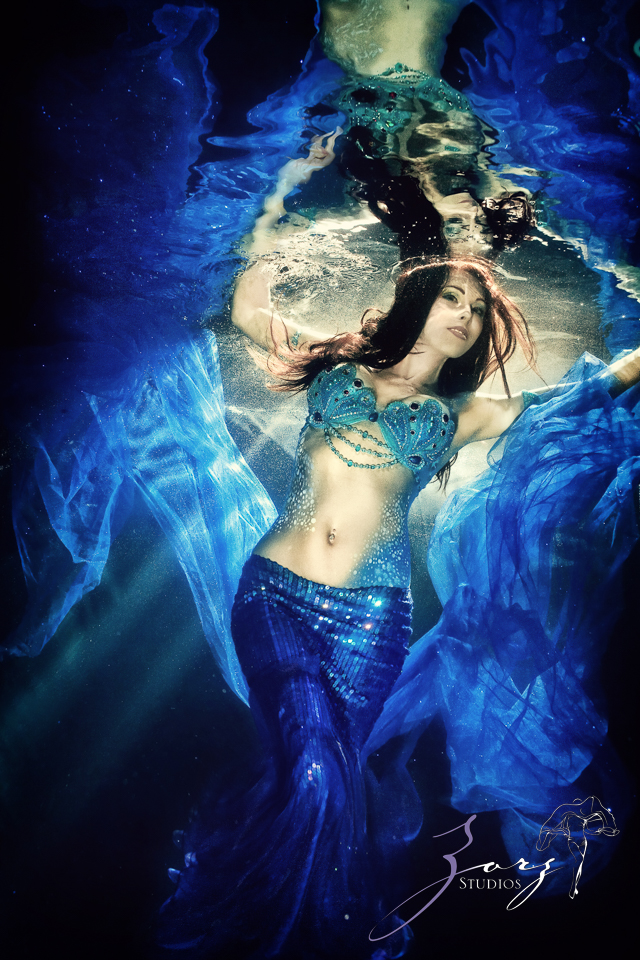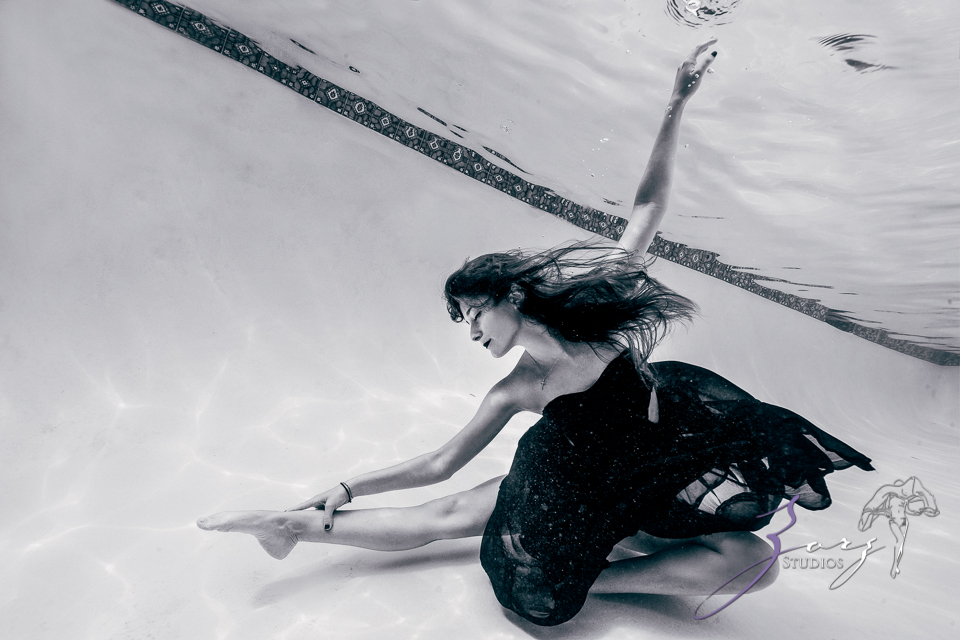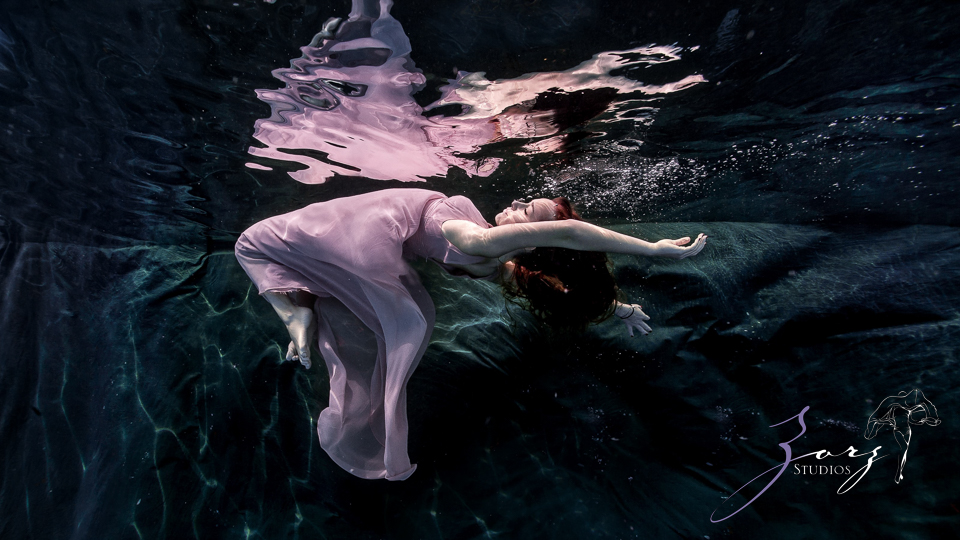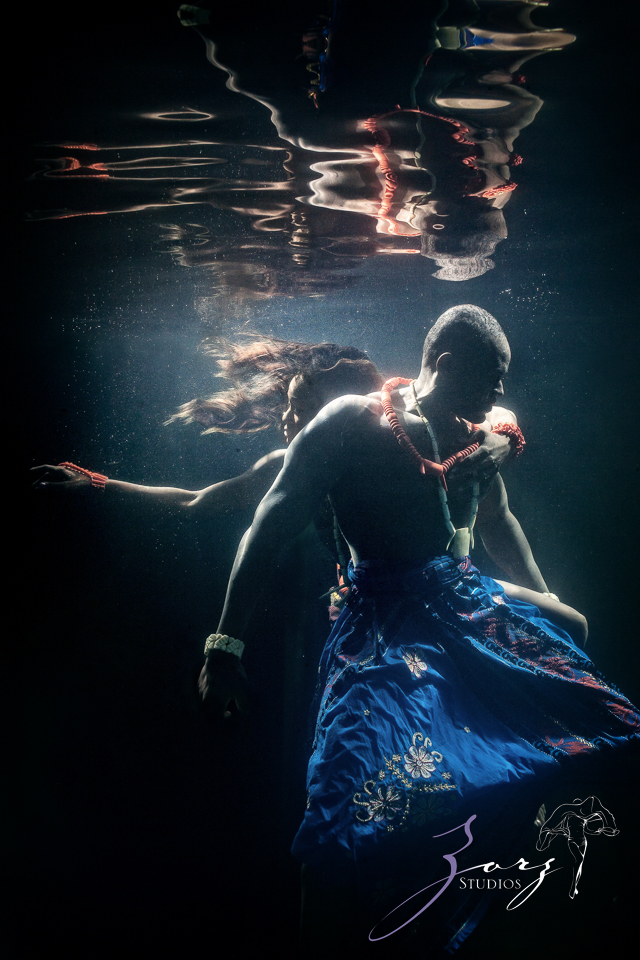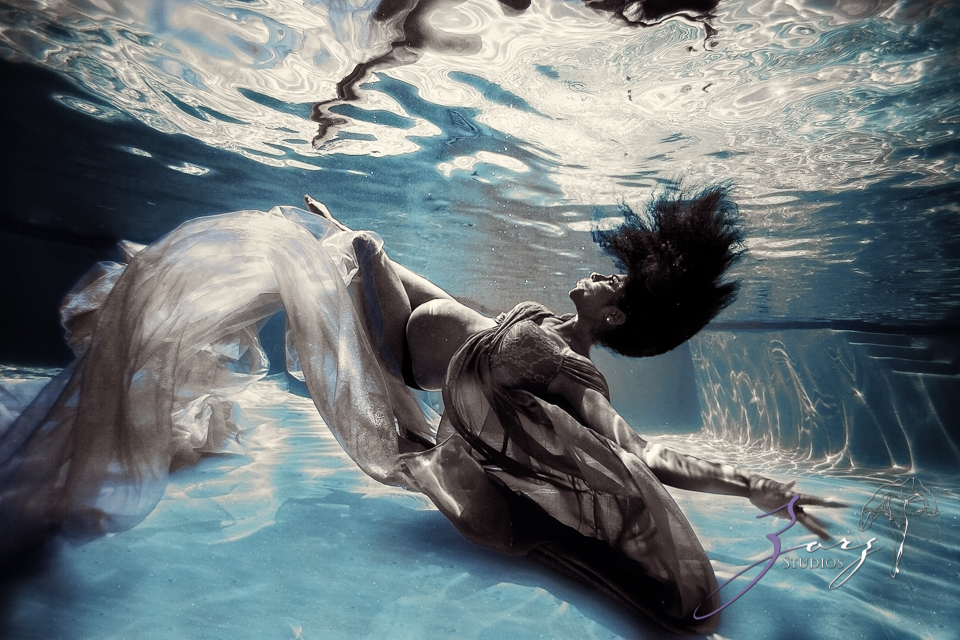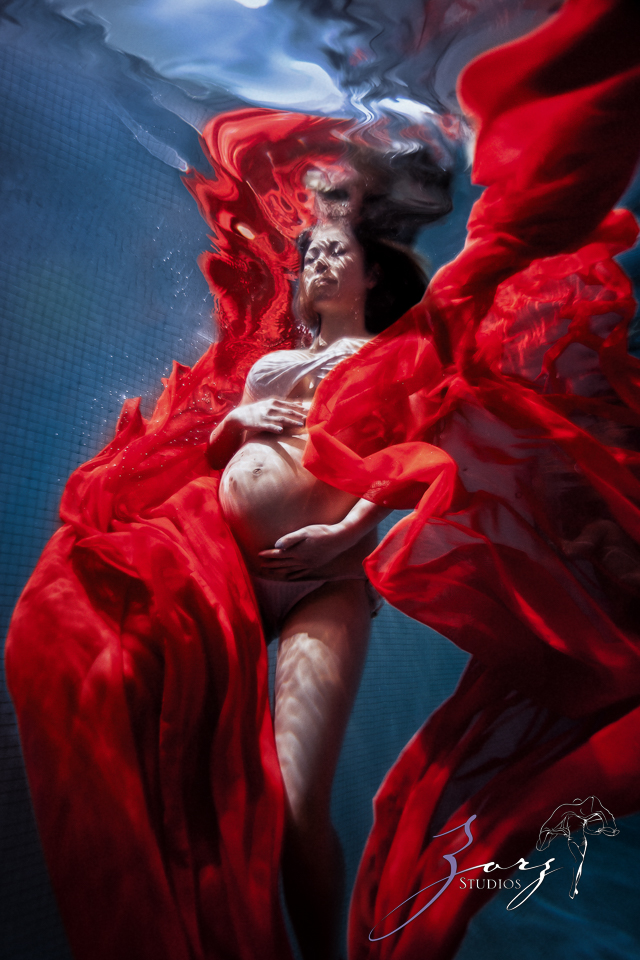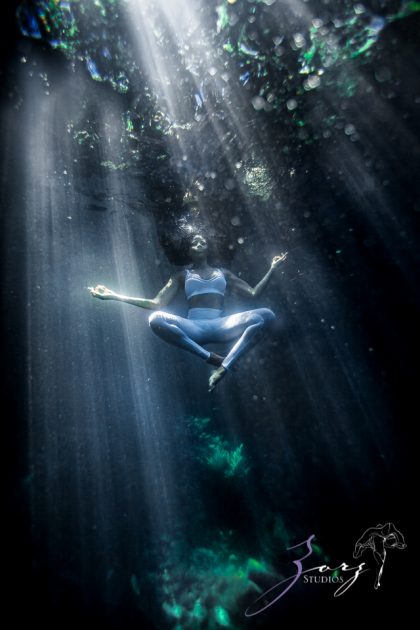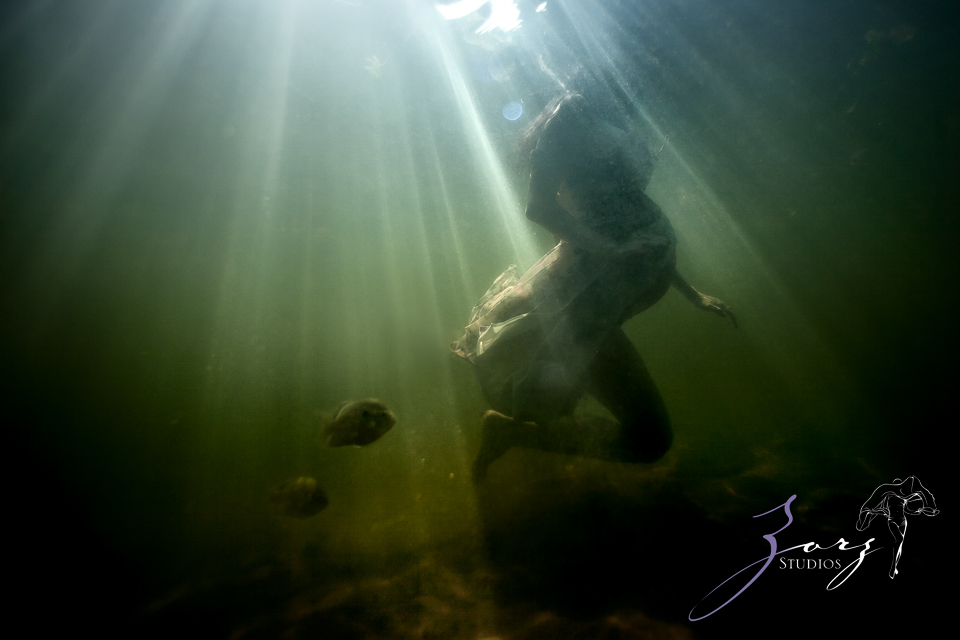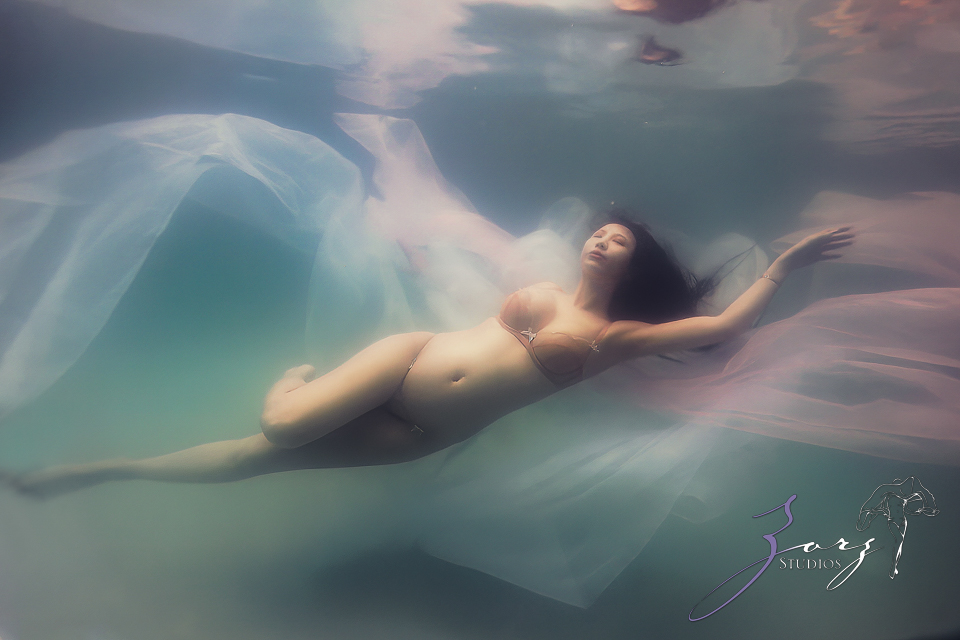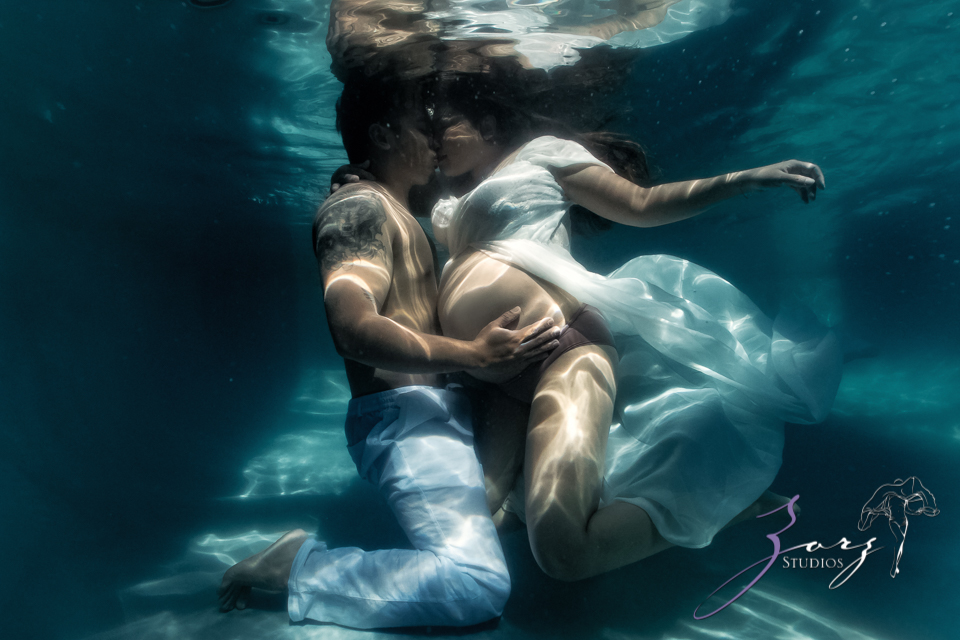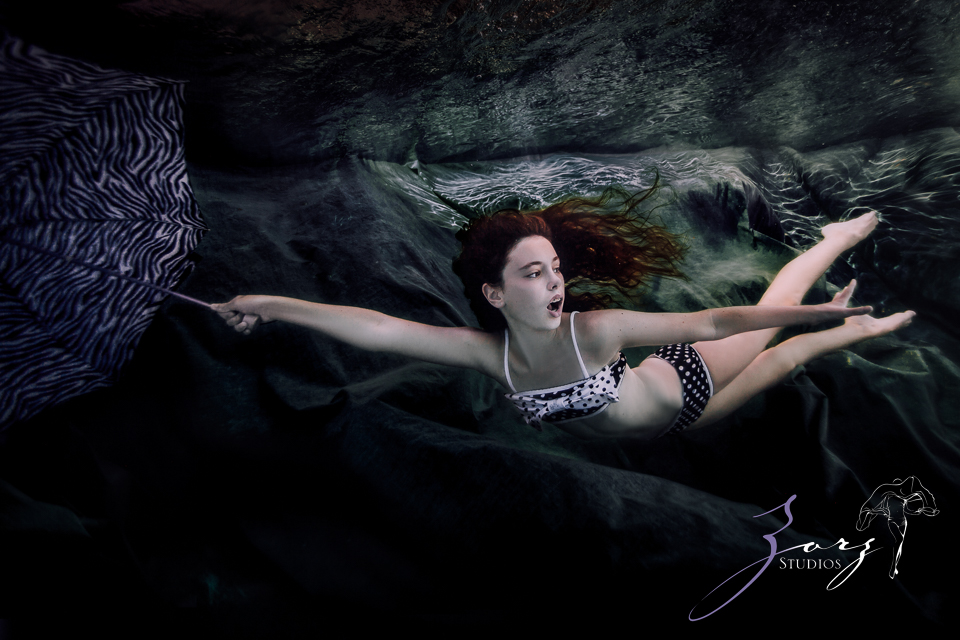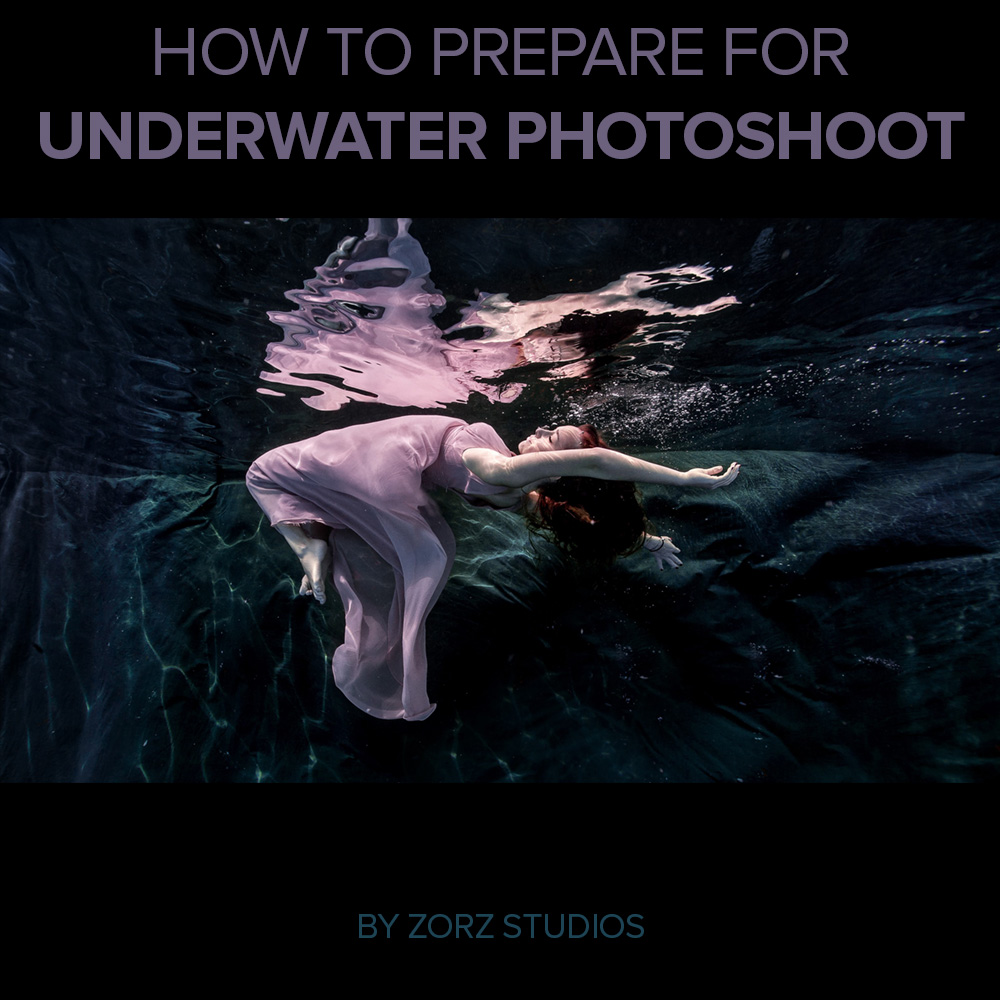
Table of Contents
Embarking on an underwater portrait photography experience is an exhilarating journey that requires careful preparation and collaboration between client and photographer. From selecting the perfect outfit and applying makeup to controlling your breathing and buoyancy and mastering underwater poses, each step contributes to the creation of epic images that capture the essence of underwater magic. By following these ten essential steps shared by a professional underwater photographer with over a decade of underwater portrait experience, you can confidently immerse yourself in the magical realm beneath the surface, ensuring a safe, satisfying, and stunning photography session.
Introduction
I’m Ed, lead photographer and owner of Manhattan-based Zorz Studios. I used to swim for years in my youth, and although I never dived professionally, I developed an above-average comfort with swimming and working underwater. My body can stay submerged for a longer period than most people, making it possible to create wonders underwater.
I took on my first underwater photo shoot in 2008, just two years after starting my professional photography. I went all in: built a temporary underwater studio in my friend’s pool, not only with a background but also a roof to block sunlight in favor of the controllable studio lights triggered by underwater strobes. It was a big deal for the first try!
The following year, I raised the stakes and collaborated with a body painter and makeup artist, Anastasia Durasova, for an even more striking outcome. (All art used in this article is created and copyrighted by Zorz Studios.)
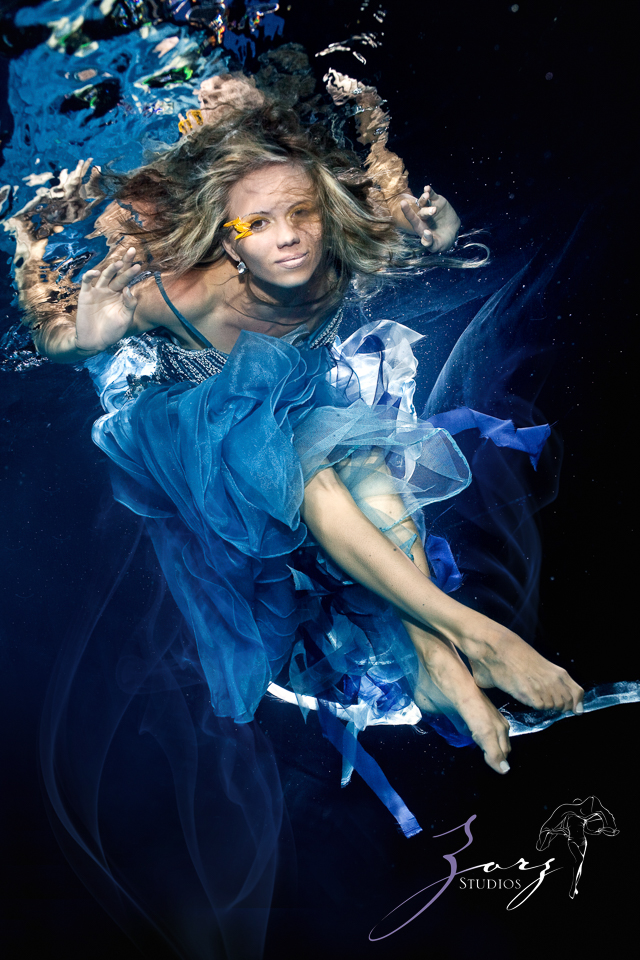
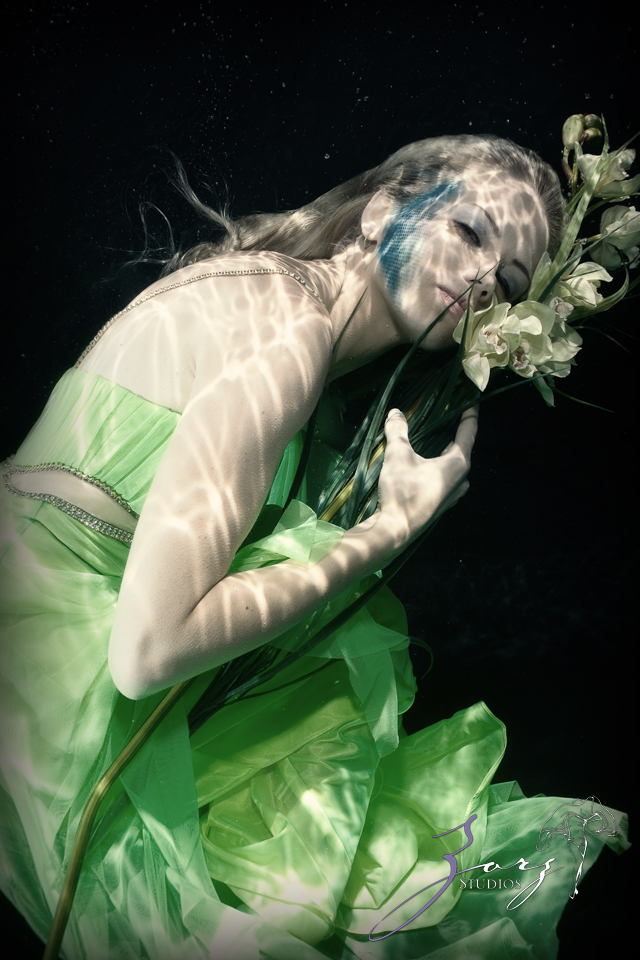

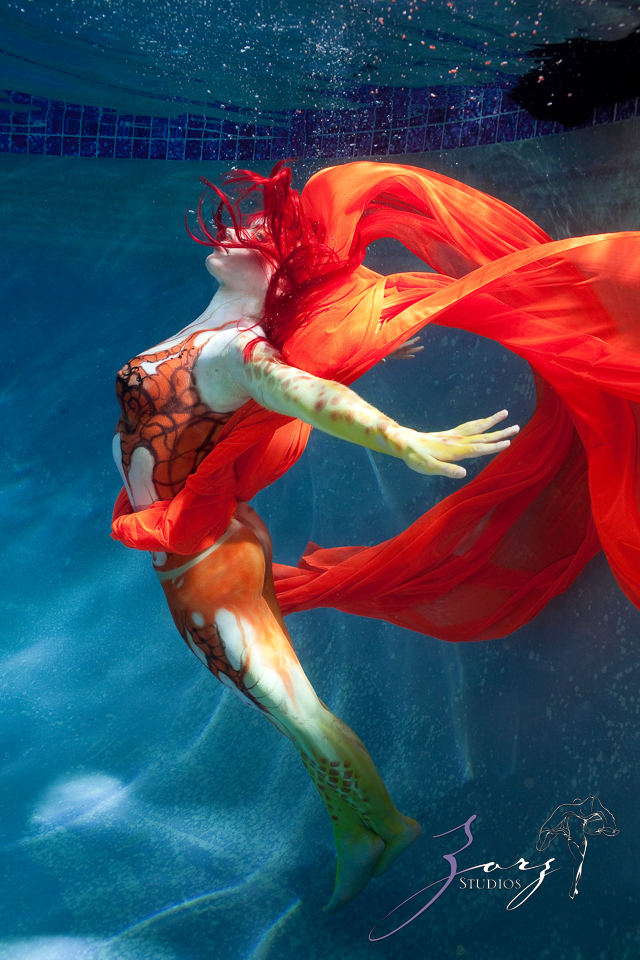
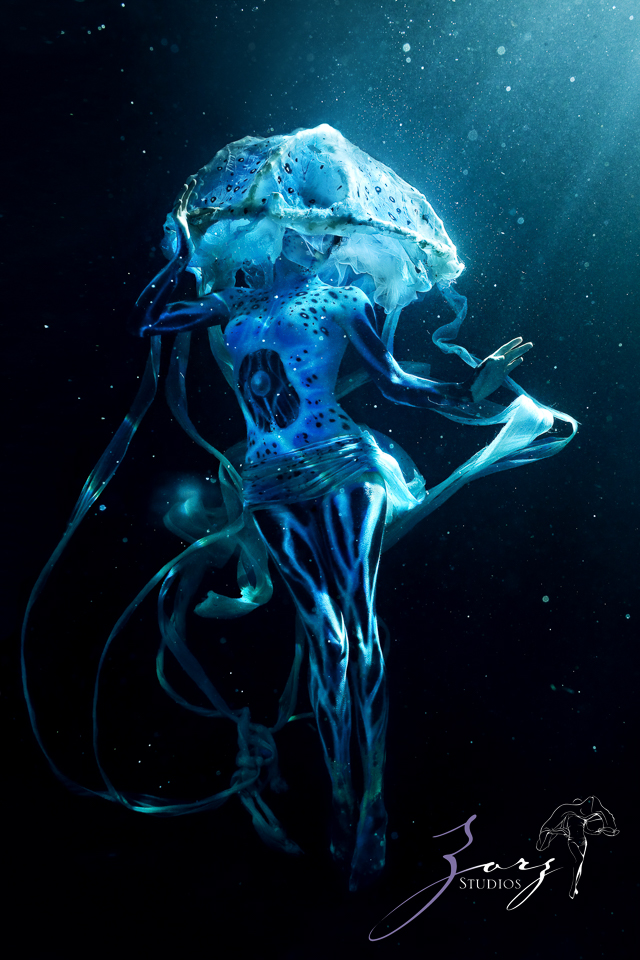
And now, 16 years later, let me reflect on all the experience and knowledge I gained since then. When preparing my underwater clients, I struggled to refer them to a guide for consumers and models preparing for such shoots. Most guides are written for photographers to help them with preparations, equipment, camera settings, and editing. Only a limited portion would be devoted to their subjects, and none as thorough as I wish. So, this guide is a fruit of years of note collection and months of writing. Enjoy!
1. Communicate with the Photographer
In the world of underwater photography, capturing the perfect shot relies heavily on clear communication between you and the photographer. Weeks or even months before approaching water, it’s crucial to have a thorough discussion about your vision. Whether you envision a serene, ethereal masterpiece or a dynamic action shot, conveying your ideas to the photographer is the first step to actualizing them. This discussion should not only focus on the aesthetic elements but also on any concerns regarding comfort and safety.
With my expertise in lighting, composition, and underwater dynamics, I can guide you on how your themes and poses can play out beneath the surface. Sharing your preferences, such as your favorite angles or aspects of your personality you’d like to shine through, helps me tailor the session to your liking.
Remember, the aim is to create portraits that are uniquely you. Perhaps you’re inspired by a piece of artwork or a scene from a film; sharing these inspirations can give me an idea of your stylistic tastes and technical requirements to consider.
A great idea would be to create a privately shared mood board, for example, on Pinterest. Once you collect the visuals that move you, invite your photographer to that board, either by his/her email address (you’ll know mine) or user name (e.g., ZorzStudios).
Exchanging ideas about aesthetics, logistics, and any additional creative thoughts sets the tone for a collaborative and customized underwater photo shoot experience. In essence, this vital step is about building a rapport and enhancing the artist-client dynamic for a memorable underwater adventure.
Also, if you have any specific concerns, like managing your makeup and hair underwater, ensuring your clothing looks best in the water’s flow, the delivery timeframe, or whether you want to combine an underwater photo shoot with a regular, on-the-ground session, now is the time to address them.
2. Understand the Requirements
Preparing for an underwater photo shoot is more than just looking good on camera. Understanding the specific requirements of the shoot is important to ensure you’re ready for the unique demands of the underwater environment.
Safety is paramount. I will brief you on underwater safety precautions but don’t hesitate to ask questions if you’re unsure about anything. It’s essential to be aware of how to signal if you’re in distress and to understand the plan for emergencies.
This starts with assessing your swimming skills. Are you comfortable moving and posing underwater? It’s okay if you’re not a professional diver; however, you should be able to hold your breath and maneuver with some degree of grace.
If you can’t swim or are cautious about submerging but still want to do an underwater photo session, there are several steps you can take to prepare and feel more comfortable in the water:
- Learn Basic Water Safety Skills: Before the underwater photo shoot, consider taking swimming lessons or water safety classes to learn basic swimming skills and gain confidence in the water. At the very least, watch some video tutorials and practice in a pool. Even simple skills like floating on your back or treading water can be valuable for feeling more comfortable underwater.
- Practice Submerging Gradually: At the shoot, start by practicing submerging in a shallow pool or calm body of water where you can touch the bottom and feel secure. Gradually work your way deeper into the water as you become more comfortable and confident.
- Use Buoyancy Aids: Consider using buoyancy aids such as flotation devices or pool noodles to help you stay afloat and feel more secure in the water. Buoyancy aids can provide added support and assistance for non-swimmers during the photo shoot.
- Practice Relaxation Techniques: Practice relaxation techniques such as deep breathing or visualization to help calm your nerves and reduce anxiety about submerging. Focus on staying calm and present in the moment to enjoy the experience to the fullest.
- Take Breaks as Needed: Listen to your body and take breaks as needed during the underwater photo shoot. If you start to feel overwhelmed or anxious, take a moment to regroup and regain your composure before continuing. Slower progression and breaks are one reason underwater photo shoots are at least twice as long.
- Work with a Skilled Pro: Hire a photographer experienced in underwater photography who can provide guidance and support during the photo shoot. A skilled photographer will know how to work with non-swimmers or cautious individuals to ensure their safety and comfort in the water.
- Adaptation to Individual Needs: Every individual is unique, and I will adapt my approach to meet your specific needs and comfort level. Whether you’re a non-swimmer, a cautious individual, or someone with limited underwater experience, I will tailor the photo shoot to accommodate your abilities and preferences.
- Safety Briefing: The photographer will provide a thorough safety briefing before the underwater photo shoot, explaining the risks associated with underwater photography and discussing safety protocols to ensure a safe and enjoyable experience.
- Monitoring and Supervision: Throughout the photo shoot, I will closely monitor your movements and activities underwater to ensure your safety and well-being. He/she will stay vigilant for any signs of discomfort or distress and provide assistance if needed.
- Instruction on Posing: Your photographer will offer guidance on posing and movement underwater to help you achieve flattering and visually compelling poses. They’ll provide direction on how to position your body, move gracefully, and interact with the environment to create stunning images.
- Encouragement and Reassurance: I will offer encouragement to help you feel confident and relaxed in the water. They’ll provide positive feedback on your performance and help alleviate any nerves or anxiety you may have about submerging.
- Creating a Supportive Environment for Goals: Your photographer will create a supportive and encouraging environment where you feel empowered to push your boundaries and explore new experiences underwater. He/she will foster a sense of trust and collaboration, allowing you to relax and enjoy your underwater photo shoot to the fullest.
3. Choosing Attire for Underwater Photo Shoot
The right attire can make or break your underwater photos. Underwater photography comes with its own set of considerations—fabrics that flow well in the water, colors that stand out, and outfits that stay put. I can offer guidance based on the shoot’s concept but always consider the practicality of any costume or accessory. Remember to bring essentials like towels, robes for warmth, and a change of clothes for after the underwater photo shoot.
Selecting the right attire for an underwater photo shoot is a critical decision that can have a profound impact on the outcome of your photos. It’s a delicate balance between personal style and the unique challenges of the underwater world. Clothing or swimwear should not only reflect your personality but also harmonize with the aquatic backdrop. The right colors can make you pop against the serene blue hues of the water or blend smoothly with the underwater scenery for an ethereal effect.
Fabrics play a significant role in underwater photography. Materials that gracefully float and flow can add a dramatic touch to your images, giving them a dreamy, weightless quality. Well-chosen attire that is tailored to move with the water will enhance your poses, complement your movements, and contribute to the visual storytelling of the underwater photo shoot.
It’s essential that your selections fit well to avoid wardrobe malfunctions. Comfort should also be a consideration, as you will need to move freely and hold poses underwater. Practicality is key, so when you work with the photographer to finalize your outfit, remember that sometimes less is more. Simplicity in design and a focus on hues that flatter your skin tone while contrasting with the aquatic setting will lead to timeless and beautiful imagery that captivates.
There are several factors to consider, including style, color, material, and where to find them. Here’s a detailed guide to help you select the perfect underwater outfits:
- Styles:
- Flowy Dresses: Flowy dresses with lightweight fabrics create beautiful movement underwater, adding an ethereal and dreamy quality to your photos. Look for dresses with asymmetrical hems or layers that will billow gracefully in the water.
- Swimwear: Opt for sleek and streamlined swimwear in flattering cuts and styles. One-piece swimsuits with interesting details like cutouts or mesh panels can create striking silhouettes, while bikinis with adjustable straps offer versatility and comfort.
- Bodysuits: Bodysuits provide coverage while allowing for freedom of movement underwater. Choose styles with high-cut legs or plunging necklines for a modern and flattering look.
- Sheer Fabrics: Sheer fabrics like chiffon or tulle can add texture and dimension to your underwater photoshoot, doubling as a creative background. Also, consider wearing a sheer cover-up or overlay to create a soft and romantic vibe.
- Themed Outfits: Using themed outfits for an underwater photo shoot can elevate the artistic quality and storytelling aspect of the images. Themes such as mermaids, underwater goddesses, or aquatic fantasy characters can create a captivating and immersive visual narrative. Carefully selected costumes, like flowing gowns, ethereal fabrics, and detailed accessories, add depth and interest to the photos, enhancing the magical and surreal nature of underwater environments.
- Professional Images: Incorporating professional uniforms into an underwater photo shoot creatively merges career elements with the aquatic environment, producing visually striking and conceptually rich images. Whether it’s a firefighter, pilot, nurse, or artist, the juxtaposition of familiar professional attire with the ethereal underwater setting highlights the dedication and unique identity of the profession while adding a surreal twist. The weightlessness and fluidity of water enhance the dynamic quality of the uniform, creating a powerful narrative that celebrates both the individual’s career and the enchanting underwater world.
- Accessories: Don’t forget to accessorize! Statement jewelry, flowy scarves, or floral headpieces can add a whimsical touch to your underwater ensemble.
- Colors:
- Bright Colors: Vibrant colors like coral, turquoise, and fuchsia pop beautifully against the underwater backdrop. Choose bold hues that complement your skin tone and stand out against the water.
- Pastel Shades: Soft pastel shades like blush pink, baby blue, and mint green create a delicate and feminine look underwater. Pastel colors have a softening effect and can enhance the dreamy atmosphere of your underwater photo shoot.
- White and Ivory: White and ivory are classic choices for underwater photography, exuding timeless elegance and purity. These colors reflect light beautifully underwater and create a soft, ethereal glow around you.
- Metallics: Metallic swimsuits or accessories can add a touch of glamour and sophistication to your underwater ensemble. Gold, silver, or rose gold accents catch the light underwater, creating a luminous effect. Don’t go too heavy, though, and remember that metallic accessories pull you down. Opt for imitation.
- Materials:
- Quick-Drying Fabrics: Choose outfits made from quick-drying fabrics like nylon or spandex. These fabrics won’t weigh you down or become see-through when wet. They are lightweight, breathable, and comfortable to wear underwater.
- Sheer Fabrics: Sheer fabrics like chiffon, tulle, or mesh add visual interest and texture to your underwater outfit. These materials float beautifully in the water and create a soft, romantic effect in your photos.
- Stretchy Materials: Choose stretchy materials that allow for freedom of movement and flexibility underwater. Fabrics like Lycra or elastane provide a snug and comfortable fit without restricting mobility.
- Places to Get Them:
- Swimwear Stores: Visit swimwear stores or boutiques that specialize in beachwear and resort wear. These stores often carry a wide selection of swimwear and cover-ups also suitable for underwater photography.
- Online Retailers: Explore online retailers that offer swimwear and beachwear in a variety of styles, colors, and sizes. Websites like ASOS, Revolve, and Nordstrom have extensive collections of swimwear and beach attire.
- Custom Designers: Consider working with a custom designer or seamstress to create a unique and personalized underwater outfit. A custom-designed piece allows you to tailor the style, fit, and fabric to your specific preferences and vision for the underwater photo shoot.
- Costume Shops: Look for costume shops or specialty retailers that carry theatrical or performance costumes. These shops may have unique and creative outfits suitable for underwater photography, such as mermaid tails or fantasy-inspired costumes.
4. Practice Underwater Poses
Embarking on an underwater photo shoot is akin to entering a different realm, where gravity loosens its hold and the rules of movement change drastically. If doable, it’s beneficial to spend some time practicing basic underwater poses and movements before the actual shoot. This preparatory step helps you acclimate to the aquatic environment, instilling confidence and comfort as you glide through the water.
Imagine your pool sessions as rehearsals in a liquid studio, where you can discover which angles and positions best capture the light and complement your features. With each practiced movement, you’ll learn how your body naturally reacts to being submerged, allowing you to refine your poise and control. This experimentation encourages creative freedom, ensuring that when the camera starts clicking, you’re already attuned to your underwater canvas, capable of delivering enchanting results.
By investing time in these aquatic rehearsals, you turn the unfamiliar into second nature, transforming your underwater photo shoot into an experience that’s as effortless as it is exhilarating.
5. Prepare Your Hair and Makeup
Stepping in front of an underwater camera calls for a slightly different approach to hair and makeup than your everyday beauty routine. To ensure you look your best through every click and flash below the surface, it’s essential to keep things as natural as possible. Waterproof makeup is a must, as it prevents smearing and offers longevity despite the aquatic setting. Opt for products specifically designed to resist water, such as waterproof mascara and eyeliner, to maintain a well-defined yet subtle look.
Consider how hair behaves differently when submerged. Floating hair can create stunning visuals, but to avoid it covering your face and obstructing that perfect shot, you may want to tie it back. Experiment with styles like braids or a sleek bun that not only complement your features but also promise to stay put when you dive underwater. If leaving your hair loose is part of your envisioned aesthetic, applying a leave-in conditioner could help maintain manageability and minimize frizz.
Practicing underwater moves that deliver the water flow through your hair also helps keep your face clear and open while giving your hair an epic shape.
By keeping your appearance refined and understated, you also allow the ethereal qualities of the underwater world to take center stage. Simplicity is key; enhance your natural beauty without overpowering it, and you’ll capture images that are both striking and timeless, with a focus on the interaction between you and the liquid space around you.
Here are some practical tips if you use your own makeup for an underwater photo shoot:
- Use Waterproof Makeup Products: Opt for waterproof or water-resistant makeup products to ensure they stay in place and maintain their vibrancy underwater. Look for waterproof mascaras, eyeliners, foundations, and lip products specifically designed for long-lasting wear in aquatic environments.
- Prep Your Skin Properly: Start with a clean, moisturized face to create a smooth canvas for makeup application. Use a lightweight, oil-free moisturizer to prevent makeup from sliding off in the water. Consider using a primer to help makeup adhere better and last longer underwater.
- Keep it Minimal: Less is more when it comes to underwater makeup. Avoid heavy, full-coverage foundation and opt for lightweight, breathable formulas that won’t feel heavy or cakey underwater. Focus on enhancing your natural features rather than masking them with excessive makeup.
- Focus on Eyes and Lips: Since underwater photography can soften facial features, emphasize your eyes and lips to make them stand out. Use waterproof mascara and eyeliner to define your eyes, and choose bold, long-wearing lip colors that will pop against the underwater backdrop.
- Use Cream Formulas: Cream-based makeup products tend to perform better underwater compared to powders, which can easily be washed away. Use cream blushes, eyeshadows, and highlighters for a dewy, luminous finish that will stay put in the water.
- Blend, Blend, Blend: Blend your makeup products seamlessly to avoid harsh lines or uneven patches. Use a damp makeup sponge or your fingertips to blend foundation, concealer, and cream products for a flawless, natural-looking finish that will withstand underwater conditions.
- Set Your Makeup: Once you’ve applied your makeup, set it with a translucent setting powder or a makeup setting spray to lock everything in place. This will help prevent smudging, fading, or transferring of makeup during the underwater photo shoot.
- Touch Up as Needed: Bring along your makeup essentials for touch-ups during breaks in the photo shoot. Pack a small makeup bag with waterproof products, a mirror, and makeup brushes or applicators to fix any smudges or imperfections that may occur underwater.
Here are some practical tips for preparing your hair for an underwater photo shoot:
- Cleanse and Condition: Start with clean hair by washing it with a gentle shampoo and conditioner. Avoid using heavy or greasy hair products that can weigh your hair down or create buildup, which may be difficult to remove underwater.
- Apply Leave-In Conditioner: Apply a lightweight leave-in conditioner or detangler to help hydrate and protect your hair from the drying effects of chlorine or saltwater. Focus on the ends of your hair, which tend to be drier and more prone to damage.
- Minimize Styling Products: Keep styling products to a minimum to prevent residue from accumulating in the water. Instead of heavy gels or mousses, opt for lightweight serums or oils to add shine and tame frizz without weighing your hair down.
- Style Hair for Versatility: Choose hairstyles that will hold up well underwater and can easily be restyled if needed. Braids, buns, and ponytails are great options for keeping your hair secure and minimizing tangling during the underwater photo shoot.
- Use Silicone Swim Cap: Consider wearing a silicone swim cap to protect your hair from exposure to chlorine or salt water and minimize drag while swimming. Silicone swim caps create a tight seal around your hair, keeping it contained and reducing the risk of tangles or damage.
- Avoid Heat Styling: Limit the use of heat-styling tools like hair dryers, straighteners, or curling irons before the photo shoot. Heat can dry out your hair and make it more susceptible to damage from chlorine or saltwater exposure. Embrace your hair’s natural texture or opt for heat-free styling methods instead.
- Bring Hair Accessories: Pack hair accessories like hair ties, clips, or headbands to keep your hair secure and out of your face during the photo shoot. Choose accessories that are comfortable to wear and won’t get easily dislodged in the water.
- Rinse with Fresh Water Afterwards: After the underwater photo shoot, rinse your hair thoroughly with fresh water to remove any residual chlorine or saltwater. Follow up with a moisturizing conditioner to help replenish moisture and restore balance to your hair.
6. Stay Hydrated and Well-Rested
Fully immersing yourself in the serene world beneath the water’s surface can be an enchanting experience. As part of your preparation, ensuring that your body is primed and ready for the unique physical demands of underwater photography is crucial. It’s not just about looking good on camera but feeling your best too. Hydration plays a significant role here; being well-hydrated ensures that your skin looks supple and glowing, helping you to embody the role of a serene sea creature or a graceful underwater enigma seamlessly.
I cannot emphasize enough that getting a good night’s sleep before the underwater photo shoot is essential. Rest is your ally; it rejuvenates your body, sharpens your focus, and enables you to maintain a relaxed composure as you pose beneath the waves. You’ll find holding your breath and staying still much easier when you’re not fatigued.
Do keep in mind that alcohol and caffeine can negatively impact your underwater performance. Alcohol can dehydrate you and affect your coordination, while caffeine might alter your buoyancy and make it harder to relax. Both can make it challenging to achieve the fluid, natural movements that are so captivating in underwater photography. Therefore, sticking to water and perhaps some hydrating fruits or snacks is your best bet to ensure that you’re in top form for a day of diving deep into your underwater photo shoot adventure.
7. Be Open to Direction: Trust the Photographer’s Expertise
As you gracefully glide through the serene underwater world in real life or potentially digitized later, the importance of being open to my direction during an underwater photo shoot cannot be overstated. Trust in the experienced eye of your photographer as I guide you to capture the most stunning images possible. With a setting that is constantly in motion, my expertise becomes indispensable for creating artful compositions.
My instructions are crucial in helping you position yourself in the water, where buoyancy and movement are unlike anything on land. I understand how light filters through the water and how to adjust poses to leverage that ethereal, diffused lighting. Embracing this guidance means letting go of preconceptions and immersing yourself in the creative process I envision.
Remember, non-verbal cues become your primary communication tool beneath the surface. Whether it’s a hand signal to move toward the light or a gesture to relax your face, these directions are designed to elicit the most authentic expressions and captivating poses. Even the slightest adjustment can have a profound impact on the final image, turning a good photo into an exceptional one.
Here are the most important techniques that I’ll be helping you to master, even if some sound questionable:
- Control Your Breathing: Maintaining steady and controlled breathing is essential for staying relaxed and conserving energy underwater. Practice deep, slow breaths to avoid rapid movements that can disturb the surrounding water or, if shooting in the open, scare away marine life.
- Practice Deep Breaths: Before the underwater photo shoot, practice deep breathing exercises to enhance lung capacity and breath control. Inhale deeply through your nose and exhale slowly through your mouth to promote relaxation and conserve oxygen.
- Stay Relaxed: Tension can lead to rapid breathing, so focus on staying calm and relaxed in the water. Relax your shoulders, neck, and facial muscles to minimize energy expenditure and maintain steady breathing. This also eliminates unflattering facial expressions, which ruin an otherwise magic shot.
- Equalize Pressure: If you’re submerged in deeper parts of the pool, gently equalize your ears and sinuses by swallowing (just as a muscle motion, not of the water) or yawning to prevent discomfort.
- Use Buoyancy to Aid Breathing: Adjust your body position to find the most comfortable buoyancy level. By floating effortlessly, you can reduce the effort needed to stay submerged and focus more on controlled breathing and posing.
- Using Controlled Exhalation to Sink:
- Exhale Slowly and Fully: Before submerging, take a deep breath and then exhale slowly and completely as you descend into the water. Emptying your lungs helps decrease buoyancy by reducing the volume of air in your lungs, allowing you to sink more easily.
- Maintain a Steady Exhalation: Control the rate of your exhalation to avoid sudden drops in buoyancy. Exhale steadily and evenly, focusing on releasing air gradually rather than all at once.
- Use Exhalation During Poses: When posing underwater, incorporate controlled exhalation into your movements to help maintain the desired depth. Coordinate your breathing with your poses, exhaling as needed to adjust your buoyancy and achieve the desired position.
- Combine with Body Positioning: To optimize sinking, combine controlled exhalation with proper body positioning. Experiment with different angles and movements while exhaling to find the most effective technique for achieving the desired depth.
- Be Mindful of Oxygen Levels: While controlled exhalation can aid in sinking, be mindful of your oxygen levels and avoid prolonged breath-holding. Take breaks as needed to inhale fresh air and replenish oxygen stores to ensure safety during the underwater photo shoot.
- Controlling Buoyancy:
- Find Neutral Buoyancy: Experiment with body positioning to achieve neutral buoyancy, where you neither sink nor float uncontrollably. This allows for better stability and control during poses.
- Refine Movement Techniques: Practice gentle movements and kicks with your legs to control your position in the water without causing turbulence. Experiment with different movements to adjust your buoyancy and maintain stability.
- Utilize Pool Edges: Use the pool’s edges to stabilize yourself and maintain buoyancy. Holding onto the pool’s edge can help you control your position and conserve energy during the shoot.
- Be Aware of Depth: Even in a pool, depth changes can affect buoyancy. Pay attention to the pool’s depth and adjust your body position accordingly to maintain stability and prevent unintentional floating or sinking.
- Watch for Water Movement: Be mindful of any open water movement, such as ripples or currents, which can affect your buoyancy. Adjust your positioning and movements to counteract these effects and maintain stability for better posing and photography.
- Posing with Fluidity: Underwater movement can be graceful and fluid, so focus on posing with smooth, flowing motions. Experiment with different poses and movements that complement the underwater environment, such as stretching out limbs or gently swaying with the currents.
- Facial Expressions: Even though facial expressions may be less visible underwater, they still play a crucial role in conveying emotion and storytelling. Practice expressing various emotions through your eyes and subtle facial movements to add depth and character to the photos.
- Maintain Eye Contact: Establishing eye contact with the camera can create a strong connection between the viewer and the subject, even underwater. Focus on maintaining a relaxed and confident gaze, and communicate with the photographer to ensure you’re looking in the right direction for the best shots.
- Experiment with Props and Accessories: Props and accessories can add visual interest and enhance the storytelling aspect of underwater photos. Experiment with flowing fabrics, underwater props, or even marine life (if safe and appropriate) to create dynamic and captivating images. Just be sure to choose props that are buoyant or can be easily maneuvered underwater.
8. Om: Relax and Enjoy the Experience Like Yoga
Embrace the unique opportunity of underwater portrait photography and focus on enjoying the experience. Let go of any self-consciousness and allow yourself to have fun and express yourself freely underwater.
Once you’ve heeded your photographer’s guidance, it’s time to truly immerse yourself in the fluid grace of the underwater realm. As you sink beneath the surface, let the weight of the world fall away. With each gentle kick and arm sweep, feel yourself becoming part of this enchanting environment. In this submerged dance, every concern should fade until only joy and the thrill of the experience remain.
Under the water’s surface, the usual rules of gravity don’t apply. You’re free to explore a different kind of beauty, one that comes with the serene silence and the play of light through water. Forget the camera for a moment and connect with the tranquil world around you. Let your movements be natural and your expressions genuine as you become one with the aquatic scenery. It’s this authenticity and relaxation that will shine through in your portraits, capturing not just an image but the essence of your delight in exploring this underwater spectacle.
Remember that the best photographs are sometimes the ones where you are simply being yourself—unforced and uninhibited. Smiling, laughing, and letting your personality bubble up to the surface will also contribute to creating stunning and spirited images that are uniquely yours. So take this rare opportunity to celebrate the joy of the moment and let the camera capture the magic!
9. Set the Right Expectations
Underwater photography presents unique challenges that can result in a lower efficiency compared to traditional photography on land. It’s important to understand these challenges and manage expectations to ensure a positive experience, even if only a few images turn out truly stunning. Here’s why underwater photography may have a lower efficiency:
- Limited Visibility: Underwater environments often have limited visibility due to factors like water clarity, suspended particles, and ambient light conditions. This limited visibility can make it difficult to frame shots effectively and capture clear, detailed images.
- Technical Constraints: Underwater photography requires specialized equipment and techniques to overcome technical constraints such as more complicated and less responsive button controls of the camera housing and lighting, water pressure, color distortion, and light diffusion. Achieving proper exposure, focus, and color balance is more challenging underwater than on land.
- Physical Limitations: Underwater photography requires physical endurance and breath control, especially for extended sessions or deep dives. Impaired vision, fatigue, buoyancy control issues, and limited air supply can affect my ability to consistently capture high-quality images.
- Unpredictable Conditions: Underwater conditions can be unpredictable, with factors like currents, waves, and marine life behavior affecting the outcome of the underwater photo shoot. It’s challenging to control these variables and anticipate how they will impact the final images.
Here are a few reasons why lack of communication, analysis feedback, and the model’s ability to control their body and props can contribute to challenges in underwater photography:
- Communication Issues:
- Misunderstandings: Pre-shoot lack of clear communication between the photographer and the model can lead to misunderstandings regarding expectations, poses, and desired outcomes for the photo shoot.
- Difficulty Conveying Instructions: Underwater communication can be challenging due to muffled sound and limited visibility. It may be difficult for me to convey instructions or for the model to understand and execute them accurately.
- Language Barriers: If the photographer and model speak different languages or have limited communication skills, it can hinder effective collaboration and coordination during the underwater photo shoot.
- Analysis Feedback:
- Limited Visibility: Underwater photographers often have limited visibility, making it challenging to review images and provide real-time feedback during the underwater photo shoot. This lack of immediate feedback can make it difficult to adjust settings, poses, and compositions as needed, resulting in a greater number of subpar images.
- Technical Constraints: Technical constraints such as water pressure, buoyancy control, and limited air supply can restrict my ability to analyze feedback and make adjustments on the fly. He/she may need to surface periodically to review images and make necessary changes, greatly extending the shoot time and requiring extra patience.
- Time Constraints: Underwater photo shoots are often time-sensitive, with limited air supply and environmental factors or pool rental terms dictating the duration of the session. This can limit the amount of time available for feedback, analysis, and adjustment between shots.
- Model’s Ability to Control Body and Environment:
- Buoyancy Control: Maintaining buoyancy control underwater is essential for stability and proper positioning in the frame. If the model struggles to control their buoyancy or maintain a consistent depth, it can result in inconsistent poses and unflattering compositions.
- Body Positioning: Achieving and maintaining proper body positioning underwater requires coordination, strength, and flexibility. If the model is unable to control their body effectively or maintain desired poses, it can limit the variety and quality of shots.
- Environmental Factors: Underwater environments are dynamic and unpredictable, and factors like currents, waves, and marine life behavior influence one’s ability to control the surroundings. Adapting to these environmental factors and working with them creatively can be challenging for the model.
- Prop Management:
- Buoyancy of Props: Some props may have buoyancy properties that affect their behavior underwater. Managing buoyant props can be challenging for both the model and photographer, as they may float away or behave unpredictably.
- Visibility of Props: Underwater visibility can impact the effectiveness of props in the frame. If the visibility is poor, props may not be clearly visible or may blend into the background, diminishing their impact on the composition.
- Safety Concerns: Using props underwater introduces safety considerations, such as entanglement hazards or potential damage to marine ecosystems. Proper handling and placement of props require careful consideration to ensure the safety of both the model and the environment.
Given these challenges, it’s essential to set realistic expectations and approach underwater photography with patience, creativity, and a willingness to embrace imperfection. Here’s how to prepare yourself for such outcomes and help appreciate the process:
- Manage Expectations: Set realistic expectations for the underwater photo shoot, acknowledging the inherent challenges of underwater photography and the possibility of limited success. Approach the experience with an open mind and a sense of adventure.
- Emphasize the Experience: Relish the unique experience of underwater photography, focusing on the adventure, exploration, and connection with the aquatic environment. Enjoy the process and embrace the unpredictability of underwater shooting.
- Quality Over Quantity: Remember, it’s not the quantity but the quality of the underwater images that truly matters. Focus on capturing a few standout shots worthy of framed wall art rather than striving for a high volume of mediocre images to dump on an online album.
- Celebrate Small Victories: Celebrate incremental improvements throughout the underwater photo shoot. Even if only a few shots turn out as expected, each successful capture represents a valuable learning opportunity and achievement.
- Find Beauty in Imperfection: Embrace the unique qualities of underwater images, such as soft focus, subtle motion blur, and dreamy colors. Remember, imperfections can add character and charm to the final photos.
10. Review the Final Images
After the shoot, review the final images with the photographer and provide feedback on your favorite shots. Discuss any additional editing or retouching preferences you may have to ensure you’re delighted with the final results.
Completing your underwater photo shoot is a mesmerizing experience, but viewing the final images is where the true magic unfolds. It’s essential to set aside time to sit down and meticulously go over each photograph. This is your chance to pinpoint the shots that you feel best capture the essence of your underwater adventure.
Give open and honest feedback on the images that resonate with you the most. Perhaps it’s the way the light rays dance around your figure, or it could be a candid moment where your natural grace and ease in the water are palpable. These are the memories you’ll cherish forever, and they deserve meticulous attention to detail.
Moreover, if there are certain elements you’d like to tweak, whether it’s the brightness, contrast, or removing unwanted stray hair, convey these retouching preferences to me. I am here to ensure you are completely enamored with the result. It’s vital to communicate clearly and effectively, as the post-production process is just as crucial in bringing your underwater story to life.
Trust your instincts. These images are a reflection of your unique experience submerged in the enchanting underwater world. Ensuring that the final portfolio resonates with your vision is key to a rewarding underwater photo shoot outcome. Take this step attentively, and you’ll certainly be delighted with the imagery that encapsulates your sublime aquatic journey.
Final Word
In conclusion, underwater photo shoots offer a unique and enchanting way to capture stunning, ethereal images, though they come with distinct challenges, such as physical performance, limited visibility, technical constraints, and the need for effective communication and control. By preparing thoroughly, choosing appropriate outfits, and working closely with an experienced photographer, you can overcome these obstacles and achieve beautiful, memorable shots. Embracing the unpredictability and celebrating even a few standout images will ensure a rewarding and unforgettable underwater photo shoot experience.
I hope this information helps you prepare and ace your underwater photo shoot, whether with me or another local underwater photographer. As for yours truly, I’ve done underwater photography from California to the NY metro area and from the Carebian to Greece, so if you live far from me, it may not be as difficult to bring me as you think! Check out my underwater pricing here, along with all the pressing questions you should be asking when selecting an artist, including when and where we can shoot. Let’s see what I can do for you, please get in touch here.

